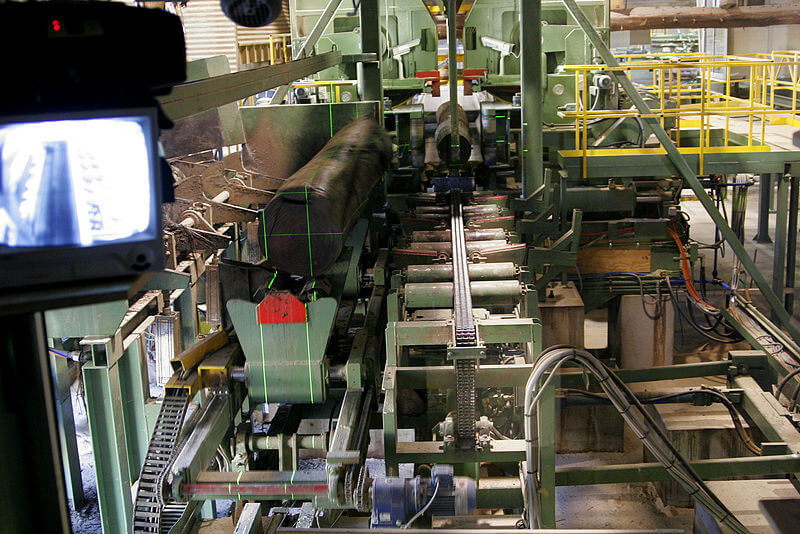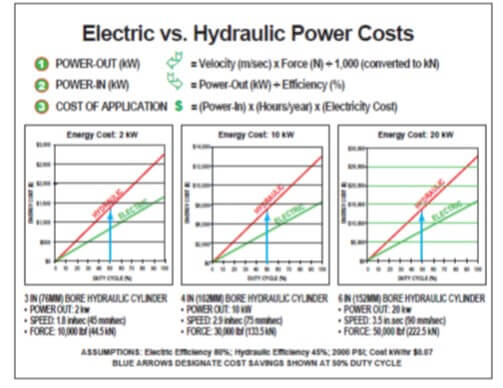How to ensure low cost linear motion
By Tolomatic on June 12, 2018
 “People want to save money on their industrial automation systems,” says captain obvious. Equally obvious is the fact that no one wants to reduce output or product quality to save a buck. So how does a machine designer accomplish this? Save money without sacrificing performance and quality?
“People want to save money on their industrial automation systems,” says captain obvious. Equally obvious is the fact that no one wants to reduce output or product quality to save a buck. So how does a machine designer accomplish this? Save money without sacrificing performance and quality?
One way to ensure affordable automation systems and, specifically, low cost linear motion, is to stop looking at purchase price only and start thinking long term. Consider the total cost of ownership (TCO) of the equipment. For detailed information on how to determine the TCO of a linear actuator, download our whitepaper, Electric actuators vs. pneumatic cylinders: A comparison based on cost of ownership.
Total cost of ownership (TCO). What’s that?
Total cost of ownership is a concept that’s gaining traction in industry. It means taking a long view of the cost of owning a piece of equipment, looking at both purchase price and the cost of operating it over its service life. Here’s what TCO means when it comes to linear motion equipment.
Total cost of ownership = initial purchase cost + (years of service X yearly operating costs*)
*Yearly operating costs =
replacement
+ maintenance
+ electricity
+ product scrap
+ lost production due to changeover and cycle time
+ any other factors you can think of
How to get low cost linear motion
There are lots of choices when it comes to actuators – fluid-powered or electric; options for lead screw type; servo or stepper motor; accuracy and repeatability capability; protection rating; Dynamic Load Rating. The specifics of your application will help you pinpoint the right actuator. Be sure your evaluation of long term cost includes these factors:
Initial purchase price
Some actuators, notably, fluid-powered cylinders, don’t cost much to buy. They can be simple, easy to operate and just what your application needs. But if you need greater flexibility, accuracy and control, the right linear motion system will cost more.
Service life
How long a linear actuator lasts has a significant impact on TCO. With fluid-powered and acme-screw actuators, engineers must rely on their history with a given product to guess at service life. Guessing is not needed with ball and roller screw electric linear motion systems. Service life for those lead screws can be estimated using an industry-standard L10 life calculation.
Replacement
Some plants regularly replace low-cost cylinders in high duty cycle and tight tolerance applications. Buying replacements adds cost, and replacement adds labor and takes time away from production. High-performance, heavy duty electric actuators typically have much longer service lives and provide consistent performance throughout that life.
Maintenance
A demanding application can wear down a low-cost actuator, affecting efficiency, force output, speed and responsiveness. Resulting problems can be hard to predict, so many plants have preventive maintenance programs that cost in time, parts and labor. An accurately-specified electric linear actuator will need little or no maintenance.
Electricity
Pneumatic systems have energy efficiencies as low as 10-30%, and hydraulic systems achieve only 40-50%. Low efficiency leads to high energy costs. Electric linear actuators typically offer greater efficiency—up to 80%.
Product scrap
The inconsistent performance of cheap actuators can cause product quality problems. An actuator that provides smooth action and good control of force and velocity produces consistent product quality, although the linear motion system may cost more up front.
Lost production (changeover)
Some actuators require manual tweaking when a product change calls for adjustment of the motion profile. This tweaking can be time-consuming and costly. Most electric linear motion systems can be changed quickly by reprogramming the controller.
Lost production (cycle times)
Some low-cost actuators operate in a simple open-close manner that leads to longer cycle times. Electric servo actuators can move exactly the distance needed and no further, keeping cycle times as short as possible.
Low-cost electric and fluid-powered actuators may be adequate for some applications. However, for demanding, high duty cycle applications, you  may find that high performance electric linear motion systems are more affordable when it comes to long-term cost.
may find that high performance electric linear motion systems are more affordable when it comes to long-term cost.
We offer a variety of linear motion products to match your performance and long-term cost needs.
Learn more
For detailed information on determining the long-term cost of a linear actuator download our whitepaper, Electric actuators vs. pneumatic cylinders: A comparison based on cost of ownership.
Interested in electric linear motion? Join the discussion at our LinkedIn group.

 Ask an Engineer
Ask an Engineer